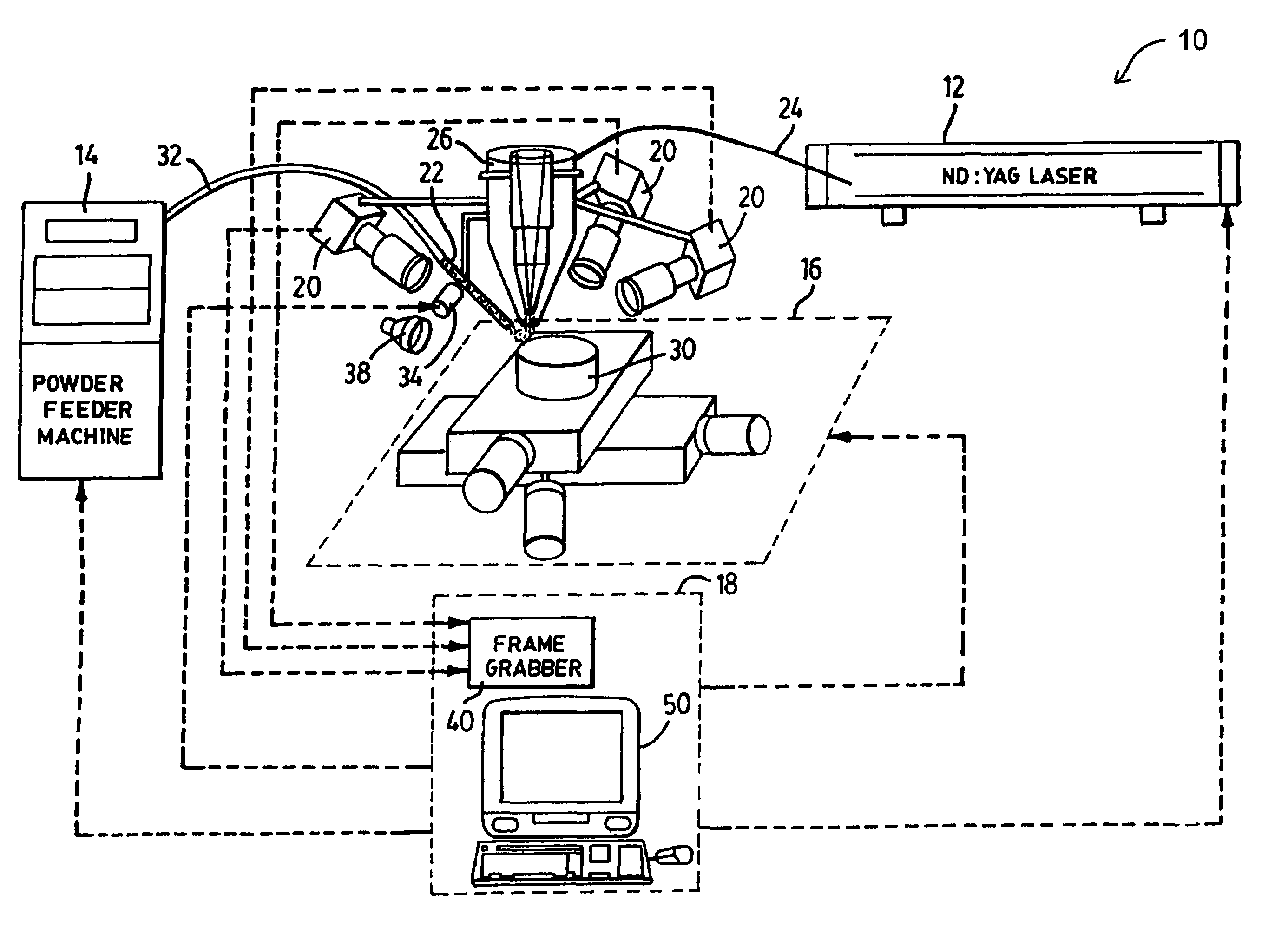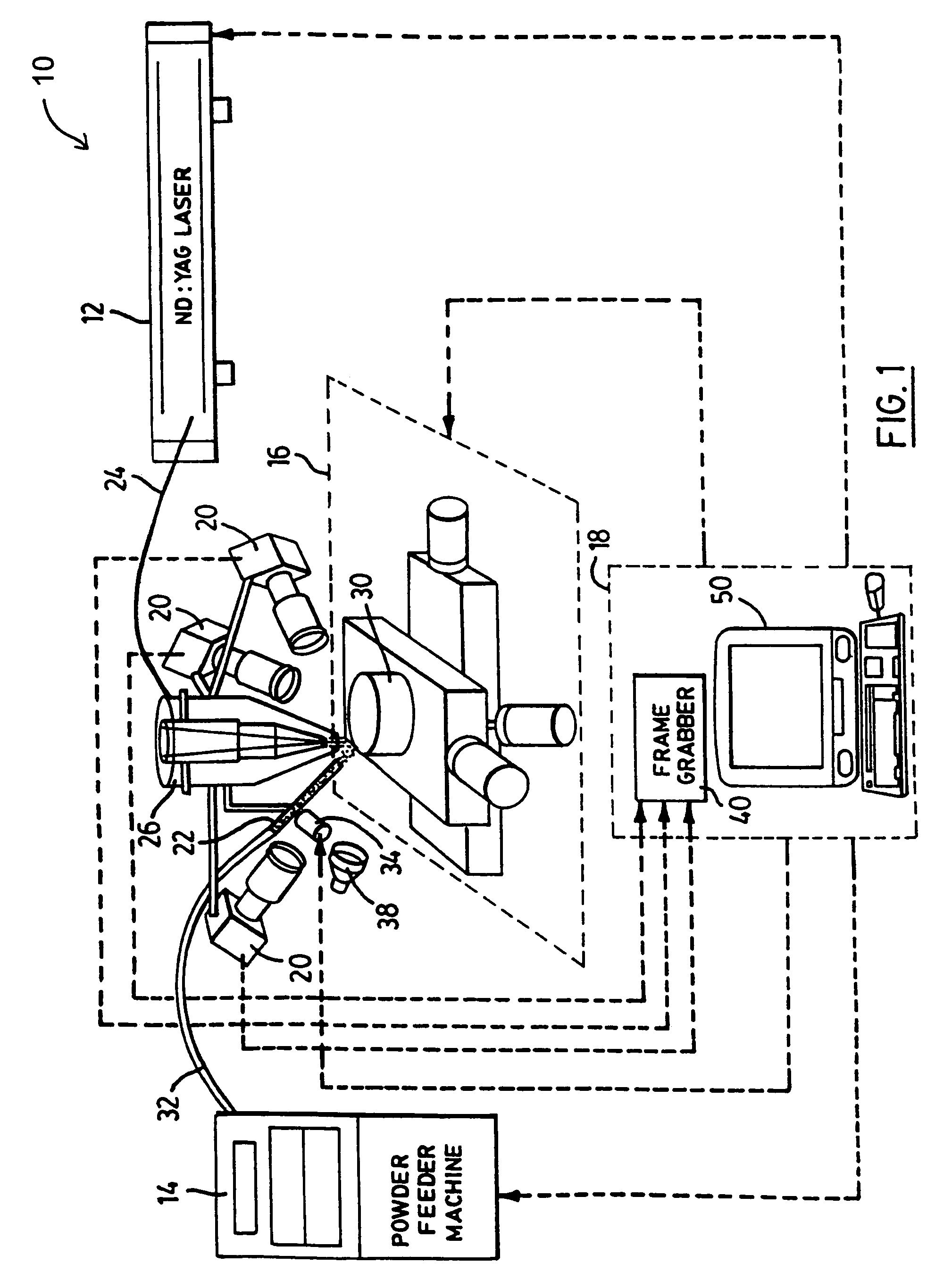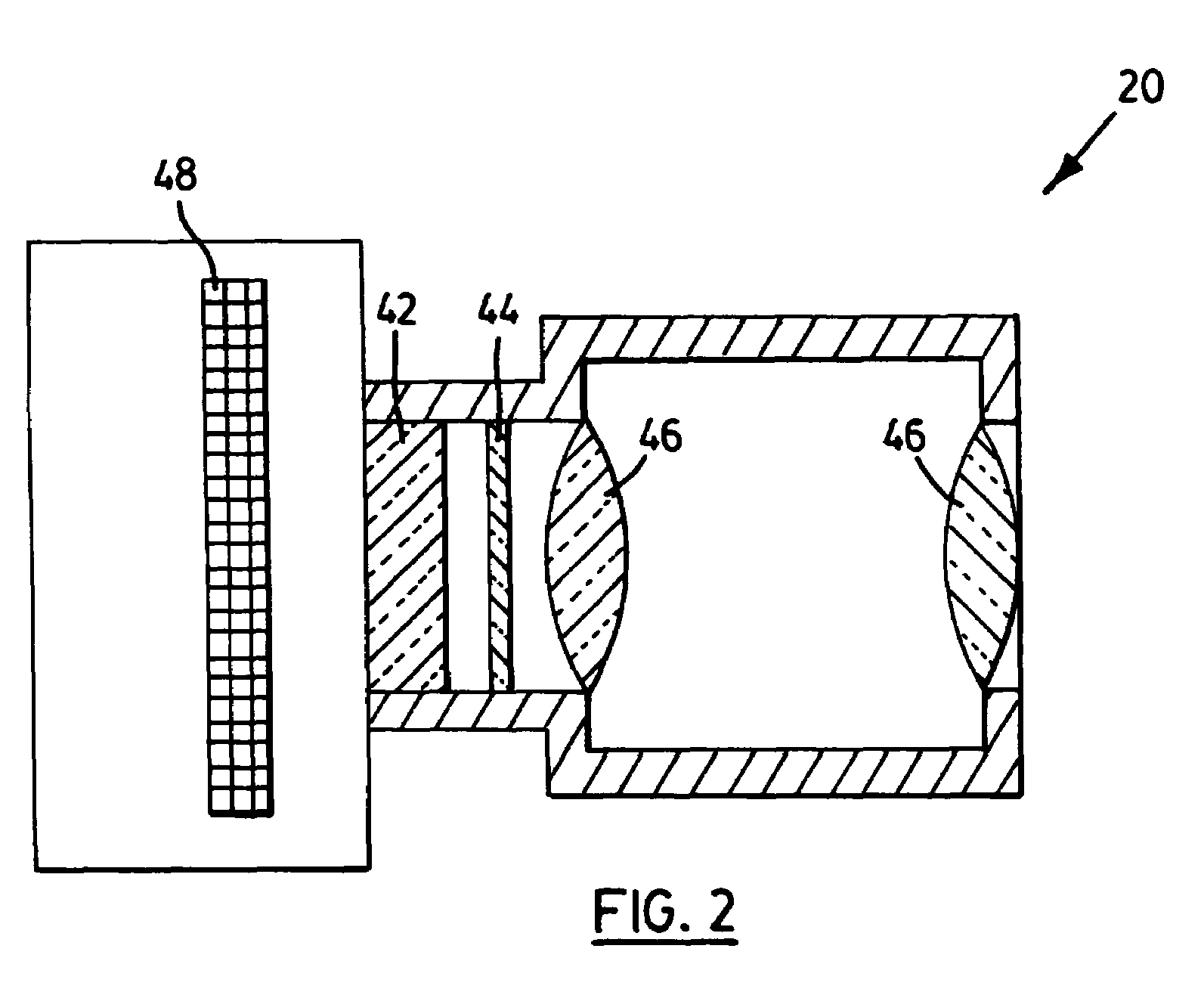System and method for closed-loop control of laser cladding by powder injection
a laser cladding and closed-loop control technology, applied in process and machine control, process control, electric programme control, etc., can solve the problems of poor reproducibility, poor quality cladding, and limited use of vision systems based on ccd technology in closed-loop control systems. , to achieve the effect of improving controller performance, high precision and accurate measurement of cladding geometry
- Summary
- Abstract
- Description
- Claims
- Application Information
AI Technical Summary
Benefits of technology
Problems solved by technology
Method used
Image
Examples
example 1
[0071]In this example a series of experiments were carried out where the powder feed rate, R and spot size, D were held constant while other processing conditions were varied. Table 1 indicates the series of experiments under investigation. Within series A, B and C the pulse frequency and duration were held constant. Also within a series, several experiments were performed at constant but different substrate velocities (e.g. A1, A2, etc. ). For each of these experiments the pulse energy was ramped from 2 to 4 J / pulse in increments of 0.5 J. During a single experiment a CCD-based detector viewed the cladding produced along a mild steel substrate where the clad height and solid / liquid solidification angle were continuously measured.
[0072]
TABLE 1Laser processing parametersConditionF (Hz)W (ms)E (J)U (mm / s)A11003.02 to 40.75A21003.02 to 41.00A31003.02 to 41.25A41003.02 to 41.50A51003.02 to 41.75A61003.02 to 42.00B1804.12 to 40.75B2804.12 to 41.00B3804.12 to 41.25B4804.12 to 41.50B5804.1...
example 2
[0084]In this example a series of experiments were carried out where the powder feed rate, R and spot size, D were held constant while other processing conditions were varied. Table 2 indicates the series of experiments under investigation. Within series D and E the pulse energy and duration were held constant. Also within a series, experiments were performed at constant but different substrate velocities (e.g. E1, E2, E3). For each of these experiments the pulse frequency was ramped from 40 to 100 Hz in increments of 15 Hz. During a single experiment the cladding produced along a mild steel substrate was viewed by a CCD-based detector where the clad height and solid / liquid solidification angle were continuously measured.
[0085]
TABLE 2Laser processing parametersConditionF (Hz)W (ms)E (J)U (mm / s)C (F*W)D140 to 1003.041.00 0.12 to 0.30D240 to 1003.041.50 0.12 to 0.30E140 to 1003.051.250.105 to 0.285E240 to 1003.051.50.105 to 0.285E340 to 1003.051.750.105 to 0.285
[0086]FIG. 11 shows the...
PUM
| Property | Measurement | Unit |
|---|---|---|
| Time | aaaaa | aaaaa |
| Time | aaaaa | aaaaa |
| Time | aaaaa | aaaaa |
Abstract
Description
Claims
Application Information
 Login to View More
Login to View More - R&D
- Intellectual Property
- Life Sciences
- Materials
- Tech Scout
- Unparalleled Data Quality
- Higher Quality Content
- 60% Fewer Hallucinations
Browse by: Latest US Patents, China's latest patents, Technical Efficacy Thesaurus, Application Domain, Technology Topic, Popular Technical Reports.
© 2025 PatSnap. All rights reserved.Legal|Privacy policy|Modern Slavery Act Transparency Statement|Sitemap|About US| Contact US: help@patsnap.com



